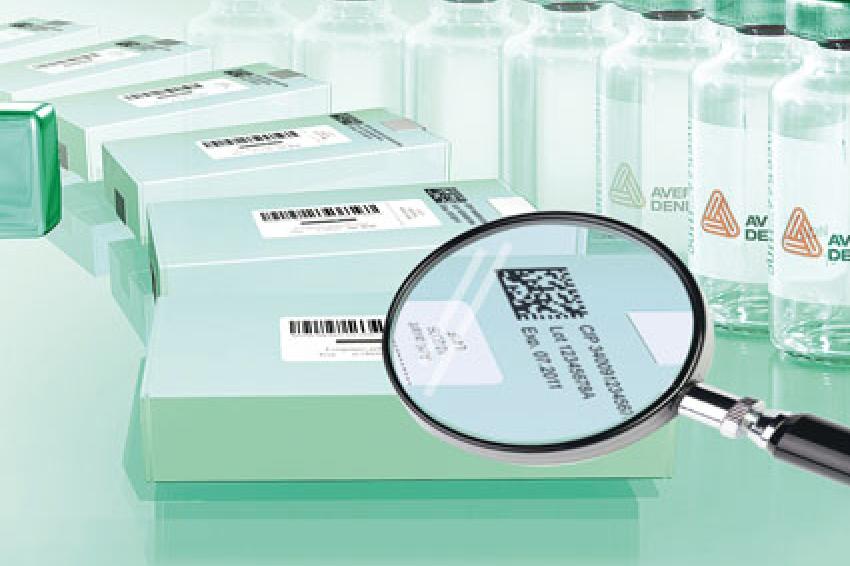In The Matrix
France to Use Datamatrix System for Pharma Traceability
Safety First - France is adopting the Datamatrix system to meet new regulations on the traceability of pharmaceutical products to increase patient safety. Avery Dennison is at the forefront of the Datamatrix barcoding technology that will become the accepted standard across France in January 2011. Other European states, such as the UK, Germany, Spain and Italy are looking to introduce similar regulations to improve consumer safety. 2D Datamatrix barcodes are able to store large amounts of information (up to 2,300 alphanumeric characters) on a small label. This makes it ideal for the small products and packaging often used for pharmaceuticals.
As of Jan. 1, new regulations created by the AFSSAPS (French Agency of Sanitary Safety and Health Products) will establish an improved coding standard for the French pharmaceuticals market. The new standard is designed to improve the traceability of medicines distributed in France and to increase consumer safety. From now on, a Datamatrix barcode containing the new CIP 13 standardized GS1 code, a batch number and the medicine expiry date will be printed on the production line as a replacement of the current French pre-printed CIP 7 standard.
As a result, quality of traceability will move to a higher level. The Datamatrix code will contain a unique number printed on each box, in accordance with the new principle of serialization. Avery Dennison is one of the first suppliers to propose complete Datamatrix integration solutions. These solutions will enable any pharmaceutical manufacturer to fully comply with the new regulation and improve traceability along their whole supply chain.
Improving the Distribution of Pharmaceutical Products
This regulation derives from the need to increase the control of the supply chain of medicines in order to guarantee the safety of patients. The aim of the new standardization is to improve the efficiency of batch recalls, to reduce errors, to combat counterfeiting and reimbursement fraud and to increase the transparency of the distribution chain. From 2011 onwards, manufacturers, distributors, pharmacies and hospitals will be required to trace products by an electronic receipt notice (EDI).
Valérie Marchand, health sector manager of GS1 France explains: "The new regulation will enable pharmaceutical companies to know quickly and accurately what they have supplied, both to the distributors and to the hospitals, but traceability often stops there. The strong point of this new regulation for the supplier is that it will send the information included in the Datamatrix code electronically. It will allow automatic integration by the various players in the traceability information chain, while also improving product monitoring and enhance flow management. In a nutshell, the regulation improves the traceability of products from the production chain to the patient's bed."
A Possible European Standardization
France and Turkey are the first two countries to adopt the Datamatrix system in their traceability regulations. What has become an official regulation in France could become a rule shared by all of Europe in the future, given that EFPIA (European Federation of Pharmaceuticals Industries and Associations) recommends the adoption of the Datamatrix system to GS1 standards as a common traceability standard. Moreover, Germany, Spain and Italy also envisage adopting the Datamatrix system in the future.
Advantages of the Datamatrix system
The Datamatrix marking system was chosen because the new regulations require three types of information: the new CIP 13 code, the batch number and expiry date of the medicine. If stored on a conventional uni-dimensional barcode, this amount of information would need a large printed area, making it impractical for many smaller medicine packages. The serialisation number will be added over time. Datamatrix marking has a large storage capacity and minimal physical dimensions, making it ideal for this application. This system facilitates the automation of product monitoring in the supply chain to allow batch recalls or automatic detection of out-of-date products. Finally, its cost remains competitive (marking cost between 0.1 to 0.2 cents).
Pharmaceutical Companies Must Adapt Their Supply Chains
Marchand said, "The pharmaceutical manufacturers will be obliged to install new printing systems for the Datamatrix marking. It is a necessity to satisfy the new regulation criteria."
As such, the French and international manufacturers who wish to distribute medicines on the French market will have to acquire appropriate equipment in order to comply with this new regulation. The difficulty of implementing this new marking lies in the correct integration of new printing and control system.





